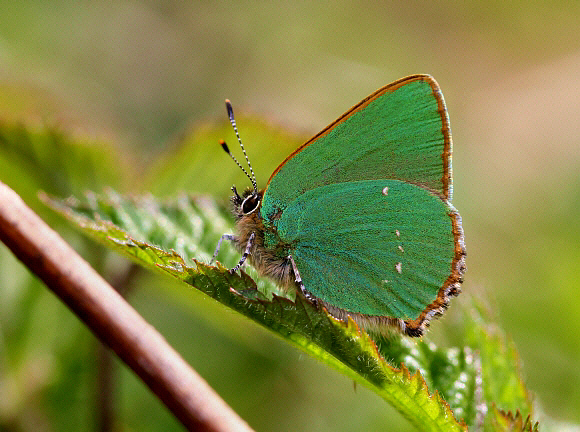Vampire moths !
Adult moths usually obtain their food from nectar and other sources of proteins and minerals, but there is one species with a rather gruesome habit: Calyptra thalictri is a very ordinary-looking pale brown moth from the family Noctuidae.
It is a native of Malaysia, the Urals and southern Europe but has recently been recorded in Finland and Sweden, and could soon find its way to Britain. Like other moths it has a proboscis constructed from 2 hollow tubes which are used like a straw to suck fluids. Instead of feeding at nectar, the Vampire moth feeds on blood by drilling its proboscis into the skin of mammals including humans!
There is no known health risk, but the wound can remain sore for a couple of hours. The vampire habit probably evolved from an ancestral ability to pierce fruit, but it could have arisen accidentally when moths imbibed mammal sweat – in the tropics many butterfly species and moths habitually obtain essential minerals by imbibing human sweat.
The chrysalis that sings !
The caterpillar of the Green Hairstreak Callophrys rubi leaves the foodplant to pupate just under the surface of the ground, often where there are stones or fallen leaves. The pupa has the ability to produce a squeaking noise – this was once thought to be a defence mechanism against ants and beetles, but research on other Lycaenids that also share this behaviour suggest that the pupa is actually “singing” to attract the attention of ants, which carry it into their nests below the ground.
The pupa secretes a sugary substance which the ants drink. In exchange the pupa gains protection from other insects that would not dare enter the ants nest.
 The Green Hairstreak Callophrys rubi, has a chrysalis that sings! © Adrian Hoskins
The Green Hairstreak Callophrys rubi, has a chrysalis that sings! © Adrian Hoskins
Hitch-hiking on butterflies !
Close examination of recently emerged butterflies can sometimes reveal the presence of very tiny scorpion-like creatures clinging by their pincers to the legs or antennae. These “pseudoscorpions” are carnivores. They normally feed on mites, insect eggs and young larvae. They don’t feed on the adult butterflies or harm them in any way – they simply hitch a lift on them, using them as transport to enable them to disperse to new habitats.
One tactic they use is to ambush a fully grown larva, using their powerful pincers to grab hold of it by its spines or head horns. When the pincers bite, the pseudoscorpion becomes quiescent. After a few hours the larva pupates.
The pseudoscorpion remains attached to the shed larval skin, which itself remains attached to the base of the pupa. Eventually the butterfly emerges from the pupa and the pseudoscorpion then scuttles onboard the butterfly, gripping hold of its antennae or legs. The butterfly then flies off. Sometime later when it lands in a suitable place, perhaps several kilometres away, the pseudoscorpion drops off. Pseudoscorpions are related to spiders, mites, scorpions and harvestmen. Their hitch-hiking behaviour is known as phoresy.
Amphibious, carnivorous caterpillars !
Scientists have discovered the first known truly amphibious insects – 4 species of moth in the genus Hyposmocoma ( Cosmopterigidae ) are now known to be capable of completing their entire larval period either on land or under water.
The larvae are found only on Hawaii. They normally live in damp habitats on land, but are equally at home in fast running streams, at which time they breathe by direct diffusion of oxygen through hydrophilic skin. They live within conical or cylindrical cases, very similar to those used by caddis fly larvae, and constructed by binding together tiny fragments of wood or gravel with silk.
The feeding behaviour of the larvae is unique among Lepidoptera – most of the 350 members of the genus Hyposmocoma feed on plants, but these 4 species are carnivorous. They seize small snails and other molluscs, bind them with silk to prevent them escaping, and then devour their soft tissue!
Hyposmocoma are the only known species to feed on molluscs, although various other forms of carnivorous behaviour are found among certain families of butterfly and moth. The larvae of many species of Blues and Hairstreaks ( Lycaenidae ) for example feed on ant grubs or aphids.
